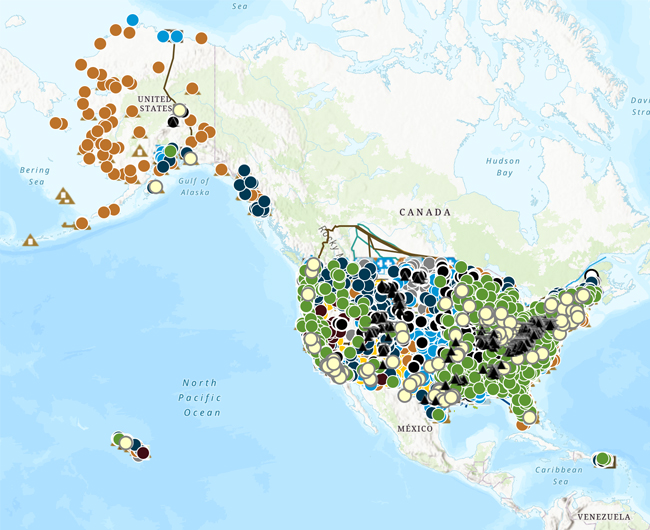Profile Overview
U.S Energy Atlas with total energy layers
 View the interactive map
View the interactive map Quick Facts
- In 2023, Oklahoma was the nation's sixth-largest producer of marketed natural gas and producer of crude oil. Overall, the state produces almost three times more energy than it consumes.
- In 2023, Oklahoma's 5 crude oil refineries had a combined processing capacity of about 547,000 barrels per calendar day, which is about 3% of the U.S. total refining capacity.
- In 2023, Oklahoma ranked third in the nation in electricity generation from wind, which supplied 42% of Oklahoma’s electricity generation. Wind also accounted for 94% of the state’s total renewable generation.
- The benchmark price in the domestic spot market for the U.S. crude oil known as West Texas Intermediate (WTI) is set at Cushing, Oklahoma, which is home to about 14% of the nation's commercial crude oil storage capacity.
- Oklahoma has more than 6% of the nation’s total proved natural gas reserves and ranks sixth in the nation, after Texas, Pennsylvania, Alaska, West Virginia, and Louisiana.
Last Updated: July 18, 2024
